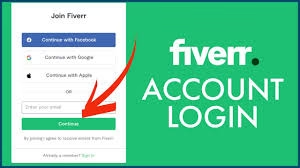Google Rank In the vast world of the internet, where millions of websites compete for attention, standing out is essential. One of the most critical aspects of achieving online visibility is your Google Rank. But what does this term really mean? How does it work? And more importantly, how can you improve it?
In this comprehensive guide, we’ll explore Google Rank in depth—what it is, how it’s calculated, why it matters, and strategies you can use to improve your website’s position in Google’s search results.
Chapter 1: What is Google Rank?
1.1 Definition
Google Rank, also known as search engine ranking, refers to the position of a website or webpage on Google’s search engine results pages (SERPs) for a specific keyword or query. If your website appears at the top of the first page of Google when someone searches for a keyword relevant to your business, you have a high Google Rank.
1.2 How Google Rank Works
Google uses a complex algorithm that evaluates hundreds of factors to determine where each page should appear in the search results. These ranking factors range from content relevance to page speed and backlinks.
Chapter 2: Why Google Rank Matters
2.1 Visibility and Traffic
The higher your rank on Google, the more visibility your site gets. Studies show that:
- The first result on Google gets around 27.6% of all clicks.
- The second result gets about 15.8%.
- The third result gets about 11%.
- Results on the second page get less than 1% of total clicks.
This means that if your site isn’t ranking on the first page, you’re missing out on massive traffic potential.
2.2 Credibility and Trust
People trust Google. If your site ranks high, users often assume it’s a credible source of information. Ranking at the top not only brings in more visitors but also enhances your brand’s authority.
Chapter 3: How Google Determines Rank
3.1 The Google Algorithm
Google’s algorithm is a closely guarded secret, but we do know it includes over 200 ranking factors, including:
- Keywords
- Backlinks
- Mobile-friendliness
- Site speed
- Content quality
- User engagement metrics
Google also uses AI technologies like RankBrain, which helps interpret complex queries and measure how users interact with search results.
3.2 Key Ranking Factors
Let’s break down the most impactful ranking factors:
a. Content Quality
Google wants to deliver the most relevant and useful information. High-quality content is original, in-depth, and answers the user’s query completely.
b. Backlinks
Backlinks (links from other websites to yours) act as votes of confidence. The more authoritative the site linking to you, the more value Google assigns to that link.
c. On-Page SEO
Includes proper keyword placement, optimized titles, meta descriptions, header tags, internal links, and URL structure.
d. Mobile-Friendliness
With the majority of searches now coming from mobile devices, Google prioritizes mobile-optimized sites.
e. Page Speed
Fast-loading pages offer a better user experience, which is why Google considers load time a ranking factor.
f. User Signals
Google monitors user behavior, such as click-through rate (CTR), dwell time, and bounce rate to judge a page’s usefulness.
Chapter 4: How to Improve Your Google Rank
Improving your Google Rank requires a strategic and consistent approach. Here are the top methods to climb the SERPs.
4.1 Keyword Research
Use tools like:
- Google Keyword Planner
- Ahrefs
- SEMrush
- Ubersuggest
Find high-traffic, low-competition keywords related to your niche. Focus on long-tail keywords for easier ranking and higher conversion rates.
4.2 High-Quality Content Creation
Create informative, engaging, and original content. Aim to:
- Solve problems
- Answer questions
- Provide unique value
Also, format your content for readability: use subheadings, bullet points, images, and short paragraphs.
4.3 On-Page Optimization
Optimize your page by:
- Using keywords in the title tag, URL, meta description, and first 100 words
- Creating a clear site structure
- Adding alt text to images
- Using internal links to related pages
4.4 Build Quality Backlinks
You can earn backlinks by:
- Guest posting on relevant blogs
- Creating link-worthy content like infographics or guides
- Reaching out to influencers or bloggers in your niche
- Using platforms like HARO (Help A Reporter Out)
4.5 Mobile and Technical SEO
Ensure your site is:
- Mobile responsive
- Loads in under 3 seconds
- Has clean, crawlable code
- Has an SSL certificate (HTTPS)
- Uses structured data (Schema Markup)
4.6 Improve User Experience (UX)
- Make navigation intuitive
- Use a clean, attractive design
- Optimize for accessibility
- Reduce popups and intrusive ads
- Ensure your site provides a smooth, frictionless experience
Chapter 5: Tools to Monitor and Improve Google Rank
Here are some essential tools for tracking and enhancing your Google Rank:
5.1 Google Search Console
Free tool from Google that helps:
- Monitor keyword rankings
- Identify crawl errors
- Submit sitemaps
- Analyze site performance
5.2 Google Analytics
Track:
- Traffic sources
- Bounce rates
- Session durations
- Conversion paths
5.3 Rank Tracking Tools
- Ahrefs
- SEMrush
- Moz
- Serpstat
These tools help track your rankings across various keywords and monitor competitor positions.
Chapter 6: Common Mistakes That Hurt Google Rank
Avoid the following SEO pitfalls:
6.1 Keyword Stuffing
Overusing keywords makes your content look unnatural and can lead to penalties.
6.2 Low-Quality Backlinks
Buying spammy or irrelevant backlinks can do more harm than good.
6.3 Duplicate Content
Content that is copied or reused across your site or other websites can lower your rankings.
6.4 Ignoring Mobile Optimization
Not being mobile-friendly means you’re losing out on a huge chunk of potential traffic.
6.5 Neglecting Technical SEO
Errors like broken links, poor site structure, and crawl issues can drastically reduce your visibility.
Chapter 7: Future of Google Ranking
7.1 AI and Machine Learning
Google’s algorithms are becoming more AI-driven. RankBrain and BERT (Bidirectional Encoder Representations from Transformers) help Google understand the context behind queries better.
7.2 Voice Search Optimization
With the rise of voice assistants like Google Assistant and Alexa, optimizing for natural language queries is essential.
7.3 E-E-A-T: Experience, Expertise, Authoritativeness, Trustworthiness
Google favors websites that demonstrate E-E-A-T, especially in Your Money or Your Life (YMYL) niches like health and finance.
7.4 Core Web Vitals
Google now measures performance using Core Web Vitals, including:
- Largest Contentful Paint (LCP)
- First Input Delay (FID)
- Cumulative Layout Shift (CLS)
Chapter 8: Case Studies
8.1 Blog Site: From Page 3 to Position 1
A health blog optimized its content by:
- Updating old posts
- Adding internal links
- Improving page speed
Within 6 months, their main article jumped from page 3 to the first position for a 15,000-search/month keyword.
8.2 E-commerce Site
An e-commerce site reduced page load time from 5 seconds to 2 seconds, resulting in:
- 40% more organic traffic
- 25% higher rankings across product pages
Conclusion
Achieving a high Google Rank isn’t about tricking the algorithm—it’s about delivering valuable, user-focused content that meets people’s needs. By combining high-quality content, technical optimization, and strategic backlinking, you can steadily climb the SERPs and grow your online presence.
SEO is not a one-time task. It requires patience, consistency, and adaptability. Keep learning, stay updated on algorithm changes, and continue refining your strategy.
If you want your website to succeed in today’s digital world, mastering Google Rank is not optional—it’s essential.






